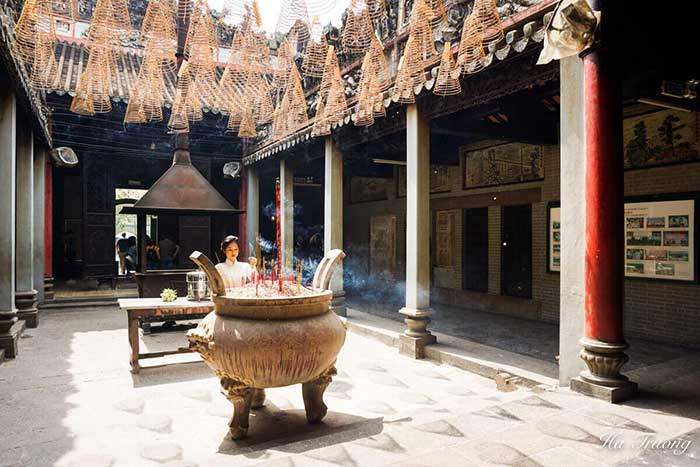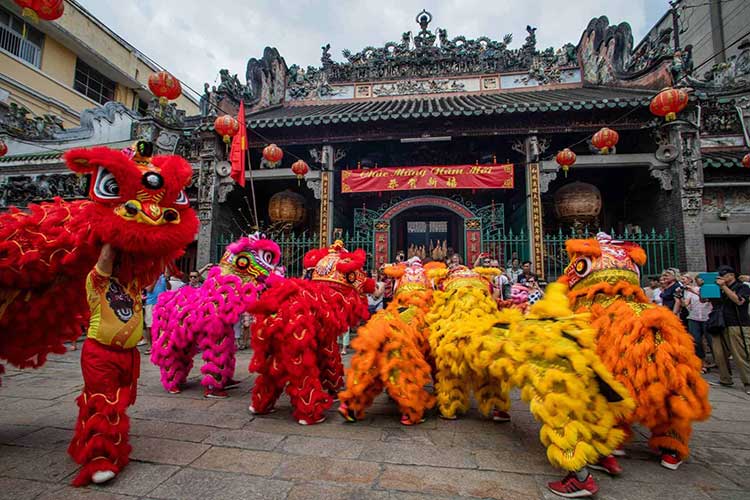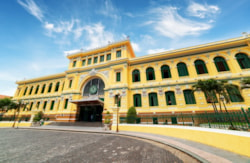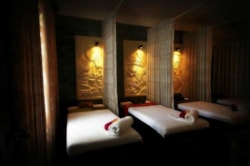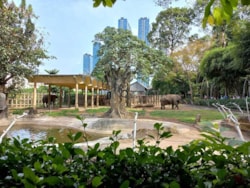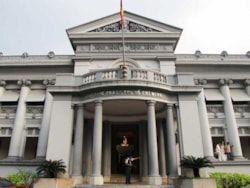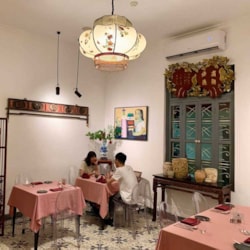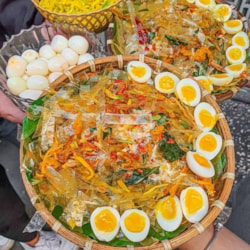1. Where is Thien Hau pagoda?
Thien Hau Pagoda, also known as Chua Ba Thien Hau or the Pagoda of the Lady Thien Hau, is located at 710 Nguyen Trai Street, Ward 11, District 5. It is in the heart of Chinatown, near many other temples, markets, and shops. This strategic location makes it easily accessible and a popular destination for locals and tourists alike.
2. How to get to Thien Hau pagoda?
There are many ways to reach Thien Hau Pagoda from different parts of the city:

How to get to Thien Hau pagoda?
-
By bus: You can take bus numbers 01, 02, 28, 56, or 66 and get off at Cholon bus station, which is about 500m from the pagoda.
-
By taxi: You can take a taxi from anywhere in the city and ask the driver to take you to Thien Hau Pagoda or Bà Thiên Hậu in Vietnamese.
-
By motorbike/car: If you are comfortable riding a motorbike or driving a car, you can navigate through the city streets to reach Thien Hau Pagoda. You can rent a motorbike from many places in the city and follow the directions to District 5 and Nguyen Trai Street.
-
By walking: If you are staying near Chinatown, you can also walk to the pagoda. It is about 2 km from Binh Tay Market and 1 km from Phuoc An Hoi Quan Pagoda.
-
Guided Tours: Another option is to join a guided tour that includes a visit to Thien Hau Pagoda. Many tour operators in Ho Chi Minh City offer organized tours that cover various cultural and historical landmarks, including the pagoda. This can be a convenient and informative way to explore the area while having a knowledgeable guide.
>>> Read more:
Best restaurant in Ho Chi Minh City
3. Best time to visit Thien Hau pagoda
The best time to visit Thien Hau Pagoda in Ho Chi Minh City is during special occasions and festivals, such as the Lunar New Year (Tet), the Mid-Autumn Festival, and the 23rd day of the third lunar month, which is the birthday of Thien Hau. On these occasions, Thien Hau Pagoda is beautifully adorned with colorful lanterns and vibrant decorations. The atmosphere is filled with excitement, as worshippers come to pay their respects and pray for blessings and good fortune. Traditional cultural performances, dragon dances, and firecracker displays are also part of the festivities, creating a lively and joyful ambiance.
Apart from the festival, Thien Hau Pagoda can be visited throughout the year. It is open to the public daily from 6:00 am to 11:30 am and from 1:00 pm to 4:30 pm, allowing visitors to explore its serene and spiritual atmosphere. However, it's important to note that weekends and public holidays tend to be more crowded, so if you prefer a quieter visit, it's advisable to go on weekdays.
4. Special things in Thien Hau pagoda
4.1. Legend and History of Thien Hau Pagoda
Thien Hau Pagoda, also known as Chua Ba Thien Hau, holds a fascinating legend and a rich history that adds to its cultural significance. The pagoda is dedicated to the Chinese sea goddess Mazu, who can travel over the oceans on a mat and ride the clouds to save people in trouble on the high seas.
Legend and History of Thien Hau Pagoda
According to legend, Mazu is also known as Lam Mac Nuong, a girl who was born in China in 1044 and became a Taoist practitioner at a young age. She once saved her father and brothers from a storm by using her teeth to hold her father’s shirt and her hands to hold her brothers. However, when her mother called her name, she had to let go of her father’s shirt and he was swept away by the waves. Since then, she became a protector of sailors and fishermen.
The pagoda was built by Chinese immigrants from Guangzhou in 1760 to worship Thien Hau and other deities. It was restored several times in 1800, 1842, 1882, 1890, 1916, 1920, and 1990. The pagoda serves as a place of worship for the local Chinese community, who come to offer prayers and seek Mazu's blessings for safe travels, good fortune, and protection from calamities. It is also a significant cultural and religious site for those interested in exploring the Chinese heritage and traditions in Vietnam.
4.2. Structure and Architecture of Thien Hau Pagoda
The pagoda is built according to the “seal” style, a typical architectural style of the Chinese people. It consists of four linked houses forming a ground like the word “mouth” or “nation” (in Chinese). There are three rows of houses in the middle which are the front hall, middle hall, and back hall. Between these rows of houses, there is a space called the “sky well”, which helps the pagoda space to be airy, make enough light for the back hall, and escape the smoke of incense.
The front hall has a large gate with a giant clock above it. On the roof, there are names of French inventors who devoted to telegram and electricity: Benjamin Franklin, Alessandro Volta, and Michael Faraday. The front hall also has two large statues of guardians and two stone turtles with steles on their backs.
The middle hall has a large altar with three statues of Thien Hau, one behind the other, all flanked by two servants or guardians. On the right side of the altar, there is a scale-model boat and on the far right side, there is the Goddess Long Mau, Protector of Mothers and Newborns. The middle hall also has two large incense coils hanging from the ceiling, which can burn for up to three months.
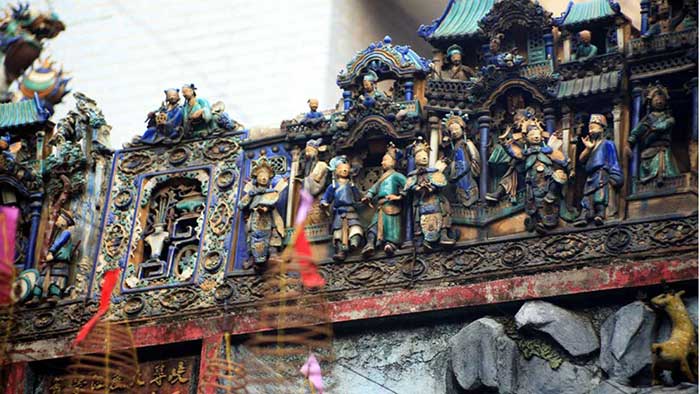
Structure and Architecture of Thien Hau Pagoda
The back hall has an altar with statues of other deities, such as Quan Cong (a general), Quan Am (the Goddess of Mercy), and Ong Bon (the God of Wealth). The back hall also has two staircases leading to the upper floor, where there are more altars and statues.
The pagoda is decorated with flowers and birds patterns, along with the parallel sentences which are usually red and yellow to create warmth and trust for the visitors. Throughout the pagoda, visitors can admire the intricate woodcarvings depicting scenes from Chinese mythology and folklore. From dragons and phoenixes to celestial beings and auspicious symbols, every detail reflects the cultural richness and spiritual significance of the temple.
4.3. Religious Activities in Thien Hau Pagoda
The pagoda is a place for worshiping Thien Hau and other deities, as well as for celebrating festivals and ceremonies. One of the most common religious activities at Thien Hau Pagoda is the burning of incense. Worshippers light incense sticks and offer them at the main altar as a symbol of respect and devotion. Visitors may also witness the act of making offerings at the altars within the pagoda. These offerings typically include fruits, flowers, and other symbolic items. Devotees believe that making offerings shows reverence and gratitude to the deities and invites their blessings and protection.
The most important festival is the birthday of Thien Hau, which falls on the 23rd day of the third lunar month. During this time, the pagoda is adorned with colorful lanterns, and devotees come together to pray, make offerings, and participate in traditional performances and processions.
Another festival is the Lunar New Year (Tet), which is the most important occasion for Vietnamese people. On this occasion, many people come to the pagoda to pray for good luck, health, and prosperity in the new year. They also offer fruits, flowers, candles, and paper money to the deities. The pagoda is decorated with red banners, yellow apricot blossoms, peach blossoms, kumquat trees, and other symbols of Tet.
Tips for visitors
Here are some tips for visitors who want to visit Thien Hau Pagoda:
-
Dress modestly and respectfully when entering the pagoda. Avoid wearing revealing clothes such as tank tops, shorts, or skirts.
-
Take off your shoes before entering the halls or stepping on the altars.
-
Respect the sanctity of the pagoda by not touching or climbing on the sacred objects.
-
Take your time to explore the pagoda's intricate details and capture its beauty in photographs, but remember to be mindful of other visitors.
-
Keep your voice low and avoid unnecessary noise to maintain the peaceful atmosphere.
-
Do not smoke or litter inside or outside the pagoda.
-
Consider visiting during weekdays or non-peak hours for a more tranquil experience.
-
It's recommended to learn about the customs and traditions associated with the pagoda before your visit.
By following these tips, you can have a respectful and enjoyable visit to Thien Hau Pagoda, immersing yourself in the spiritual atmosphere and gaining a deeper understanding of Chinese culture and religious practices.
Conclusion
Thien Hau Pagoda is a wonderful place to visit in Ho Chi Minh City. It is not only a place to admire the beauty and history of Chinese culture but also a place to experience the spirituality and festivity of Vietnamese culture. Don’t miss this opportunity to explore one of the best places in Ho Chi Minh City.
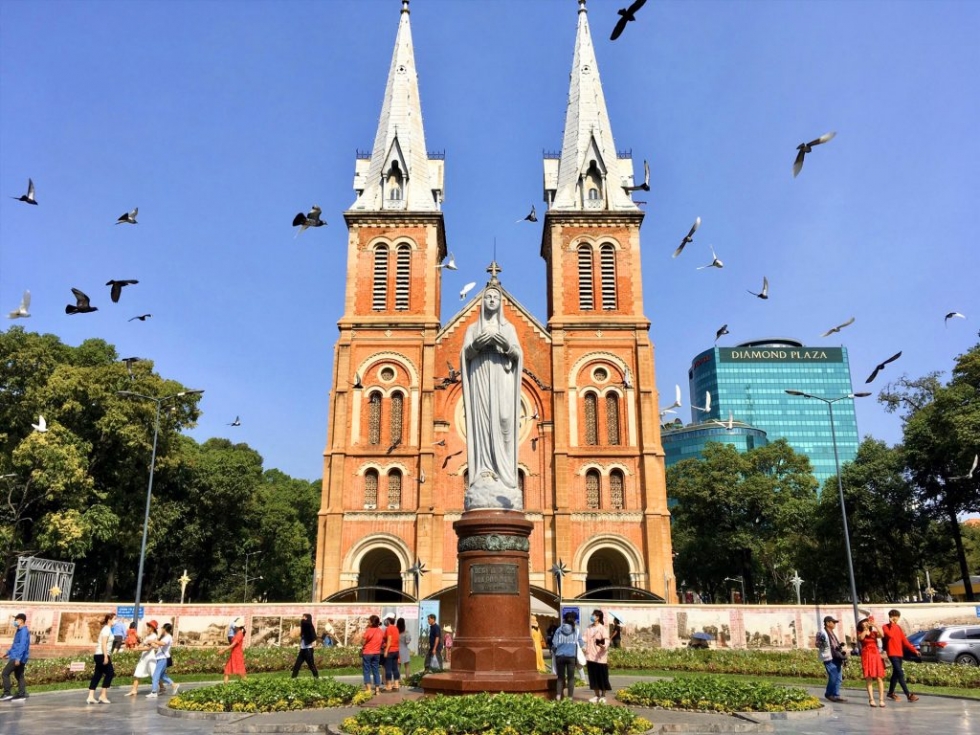
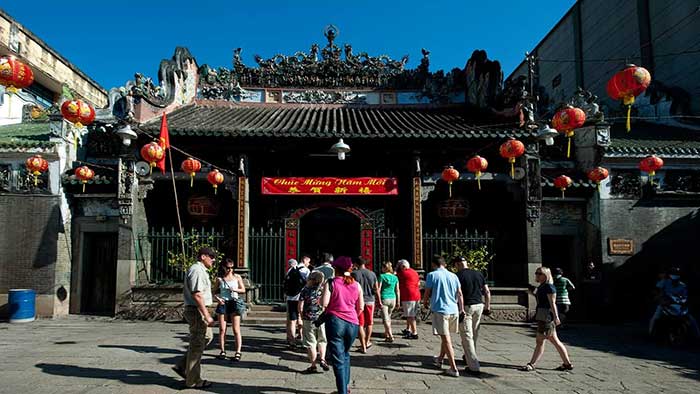
.jpg)
